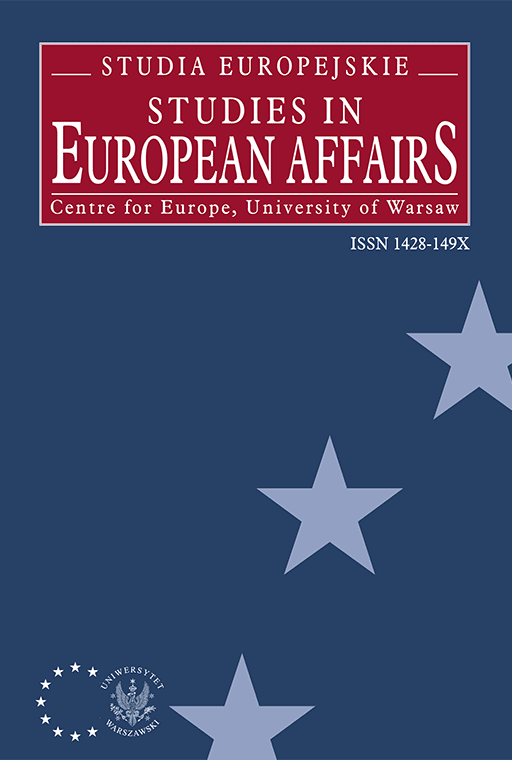
ISSUE: 4/2011
- Volume 60
- Number 4
- 2011
Subscribe NEWSLETTER
Studia Europejskie –
Studies in European Affairs
ISSN: 1428-149X
e-ISSN: 2719-3780
License
Articles published in the journal are under a Creative Commons Attribution – Non Commercial – No Derivatives 4.0 International License
Drogi i bezdroża Wspólnej Polityki Rolnej
Proper Tracts vs. Leading Astray of the Common Agricultural Policy
Abstract
The Common Agricultural Policy (CAP), introduced in the 1960s, belongs to the oldest and the most criticized policies of the EU. In spite of different attempts of reforms, it constitutes the permanent ‘hot potato’ for Ministers of Agriculture and Ministers of Finance alike because of high costs and uneven distribution of profits and financial burdens. During the Polish Presidency in the EU Council, the debate on the new budget perspectives of 2014–2020 has entered into a new and uneasy (financial crisis) stage. And further reforms of the CAP are an inevitable part of future compromises. The first part of this article outlines the history and general principles of the CAP. The authors argue that – despite the remarkable changes of the economic and social conditions, the increasing importance of the factor of environment, absent during the early stage of the CAP, and a shift in the ‘philosophy’ of agricultural and rural development (sustainable development, organic agriculture, etc.) – the provisions of Article 39 of the Treaty of Rome, with its five-point description of the basic CAP objectives, have survived unchanged. The article further discusses in brief the experiences of the first decades of reforms, with the introduction of the dairy quotas in 1984 and the Mc Sharry reform of early 1990s as keystones. The next part of the article describes the new wave of reforms, introduced since 2003 – the spread of direct payments, decoupling and crosscompliance. The next sections illustrate the needs to make the CAP more simple and clear for the beneficiaries and the staff of the administrative agencies. The next part describes the results of the field survey on the constraints to the effective introduction of the development projects for agriculture and rural development, covering the officials of commune administration, which coincide with the results of a questionnaire conducted among the participants of the Conference of Directors of the EU Paying Agencies (Sopot, September 2011). The final section of the article reviews the prospects for a simplification of the CAP in the years 2014–2020.
Language: Polish
Pages: 55-71
How to Cite:
Harvard
Chotkowski, J. and Gaziński, B. (2011) "Drogi i bezdroża Wspólnej Polityki Rolnej". Studia Europejskie – Studies in European Affairs, 4/2011, pp. 55-71.